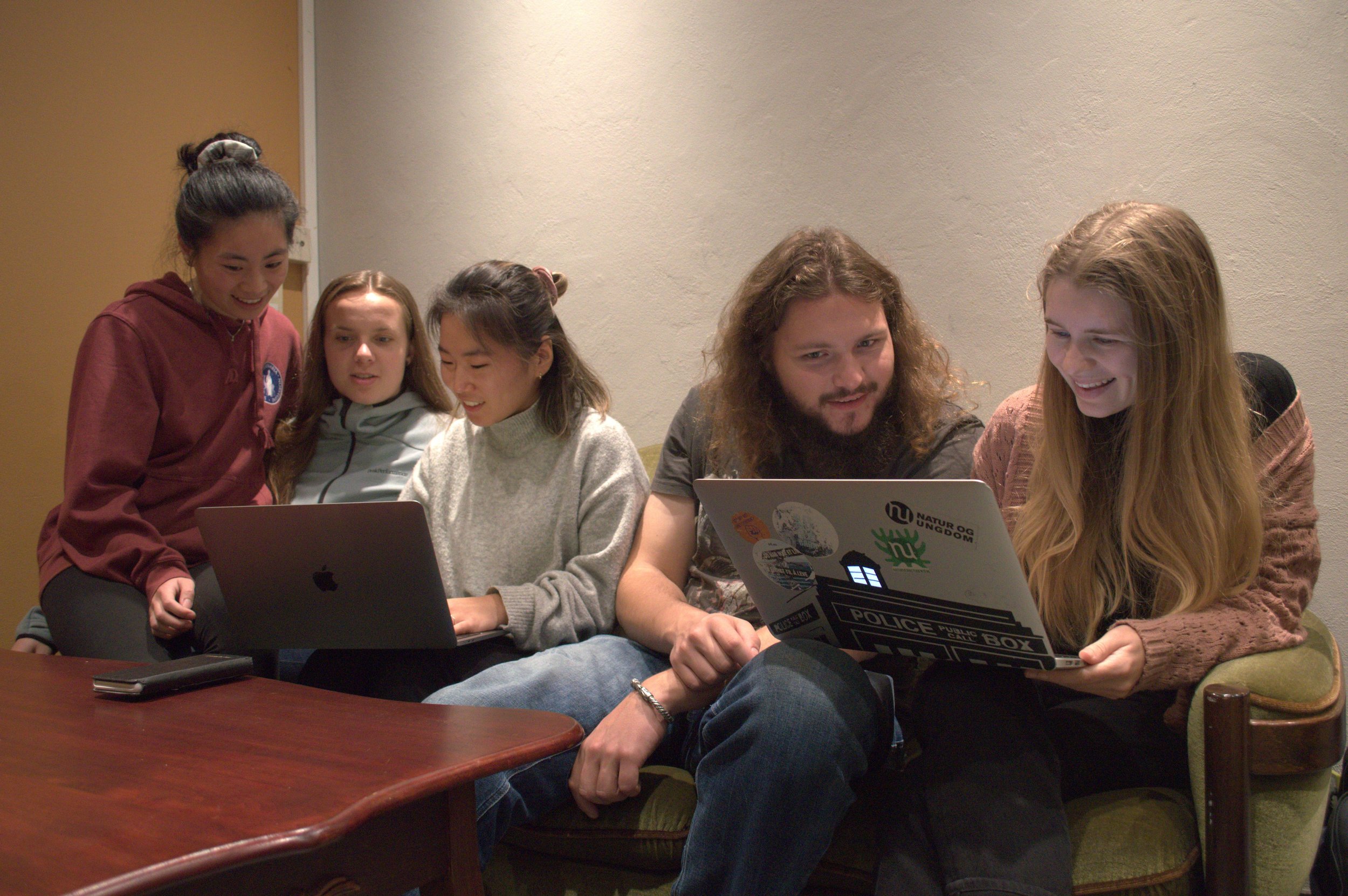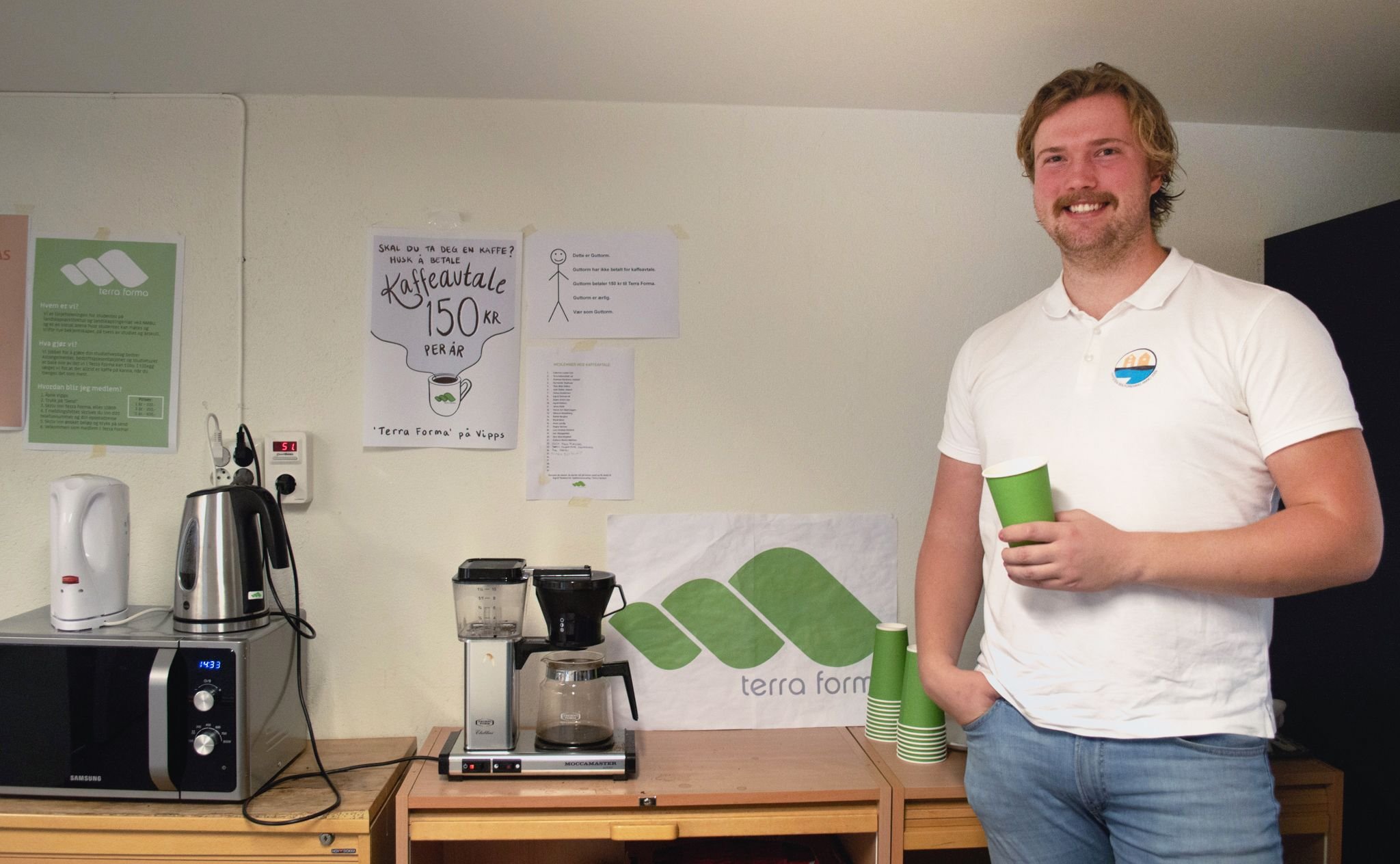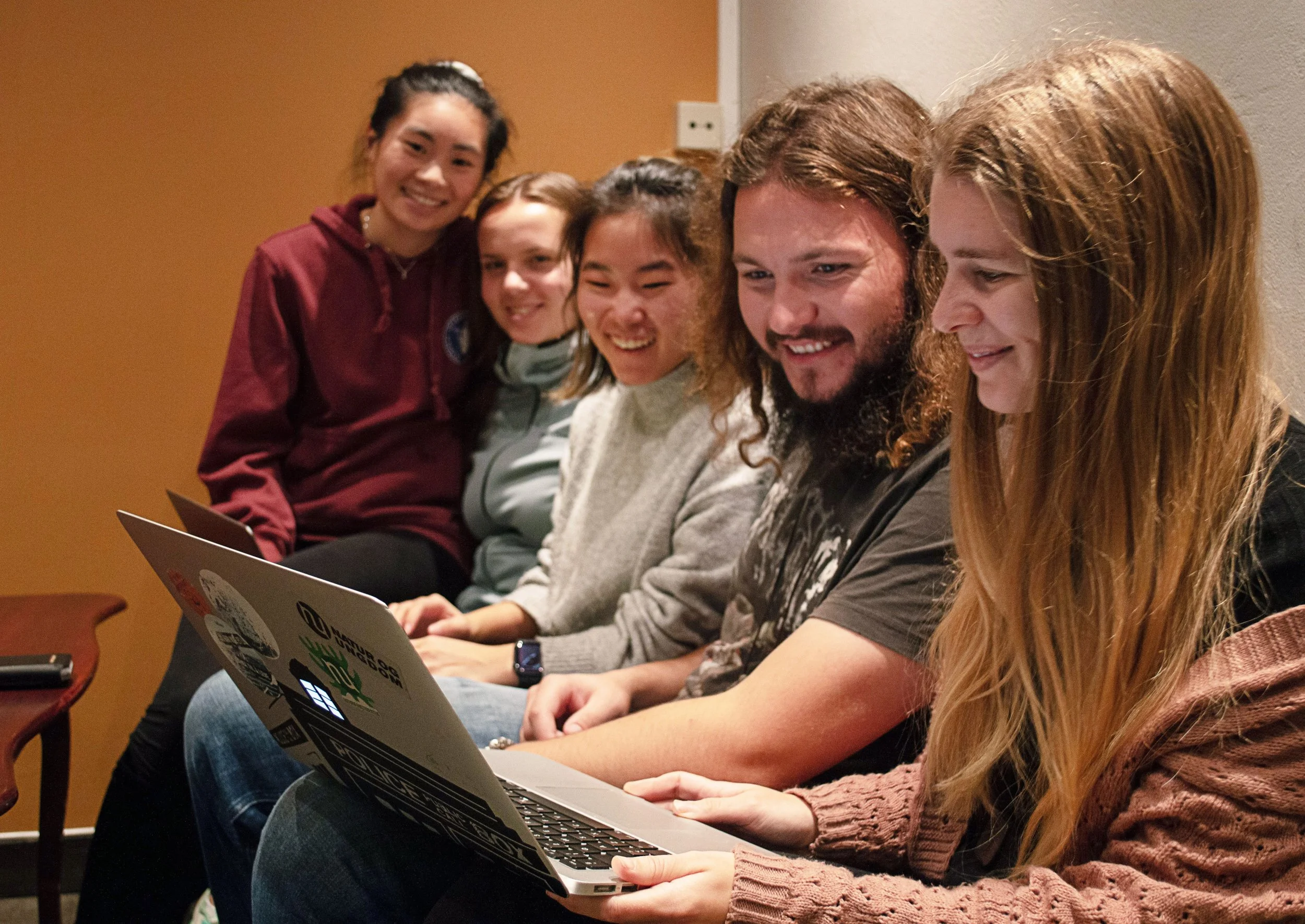Study Associations – What, Who and How?

Study Associations – What, Who and How?
Ås is well-known for its colorful variety of organizations. Lots of things are fighting for our attention, and at times it can feel as if the day is way too short. Whether you are a busy person or not, motivated or fed up, I highly recommend spending time with your study association. Tuntreet is here to show you a selection: Terra Forma and Hemulen!
Journalist og photographer: Pauline Hovland
Translator: Alexander Mæland Munkejord
Photo: Pauline Hovland
The study associations at NMBU gather students of the same program or faculty for academical and social events. They are driven by sponsorships from companies, welfare funds and membership fees. Many of them host company presentations where you can meet future employers. If you are looking for a summer job or an internship, you should attend the next “bedpres”. There, you will probably receive both free merch and lunch too. Wednesday 29th of September, the international consultancy company WSP had a so-called “bedpres” for members of the study societies Terra Forma, Struktura and Jordskifterlaget. Internally, this was also a great occasion for the program managers of the different societies to throw and catch ball.
A coffee chat at Akropolis
We meet with the leader of Terra Forma, Guttorm Morka Mælum, in Ormen Lange at Akropolis. Terra Forma (lat.: Earth-shape) is the study association for landscaping architects (LA) and landscaping engineers (LING). Akropolis is well-known for housing coffee-slurping students. The coffee deal in the kitchen seems to be suffering from some shrinkage and parasite culture, but Guttorm thinks that the social side coffee-drinking makes up for it.
Guttorm tells us that Terra Forma, apart from providing academical input, contributes to forming a healthy environment between LA and LING. He also mentions how this network can be used to share information about the courses. Even in life after NMBU, this will be useful, both academically and psychosocially.
The foundation of student associations
The study associations at NMBU share a good bit of common features. We choose to use Terra Forma as an example to give an impression of what it can look like. Terra Forma has a board election every semester where half of the board is replaced, and they host board meetings every month. The board consists of leader and secretary, along with one program manager for each study program. The program managers arrange sponsorship deals and host “bedpresses”. They also have managers of events, kitchen, economy, marketing, and one academically responsible who represents the students externally. As a former manager of marketing in Terra Forma I recommend anyone interested in design to run for positions in their student associations.
Photo: Pauline Hovland
Boars meetings in Terra Forma
In a regular meeting they spend about one hour going through ten cases. Those who cannot attend are expected to read the minutes written by the secretary. The board shares a Google Drive, containing descriptions of the positions, earlier completed cases, layout-templates and other things. They also share an e-mail address, usually full of requests from individuals who want a gardener, landscape-engineer or architect to look at their garden.
Member perks
Terra Forma has had some trouble reaching out to students, especially LING. Now, they have reached a record high number of members. Guttorm thinks this can be explained by them making the events more exclusive, opening for the purchase of multi-year membership, and giving everyone a fancy carry-bag at the start of the semester. Simply put, Terra Forma has made the membership advantages more visible. Another tip from Guttorm is to be more visible through more presence and merch. He is not very fond of Facebook, because people tend to forget that they have selected “interested” on events. The members are more committed to the events when they apply through Google Forms. The organization is well underway with the activities on their semester program, and the next big event is the fall prom, the 20th of November.
Wine in Moomin Valley
Tuntreet gets to be a fly on the wall when the study association Hemulen holds their board meeting one night at Klubben. This is the organization for those who study biology and plant sciences at NMBU. Externally, they are known for their wine evenings with a shared box of wine for the members. The box wine arrangement, unfortunately, was a constant minus in the budget, so it got abolished as it was deemed inappropriate to spend welfare funds on wine. What a shame.
Photo: Pauline Hovland
Bringing people together
The students of these two programs take courses with a whole lot of participants, and it can be challenging getting to know people in large lecture halls, like in BOT100. In particular, the students who started in 2020 had few opportunities to form good class environments because of the lockdown. Hemulen is a common platform that gathers students on the same year, and across different years and programs. They do this, among other things, by hosting academical lunches. Students of biology and plant sciences are free to choose what they want to specialize in for their master program, so the lunches with presentations of master projects from former students have become a hit.
Board meetings in Hemulen
The board is a well-acquainted group, and works with a somewhat free structure. The different positions are similar to those of Terra Forma. A regular board meeting lasts one to two hours, and often includes something to eat. While TT is present, they discuss registration in The Brønnøysund Register Centre, something all study associations do when they have elected new board members. They also discuss points on their monthly calendar. The leader, Astrid Braut Solheim, tells us that she feels inspired to give Ås students something similar to the career nights that the biology students at UiO get. Thus, Hemulen is aiming to host “bedpres” with Tine, Norconsult and Felleskjøpet, among others.
Identity and concept
Hemulen as a concept has caused some confusion. I used to believe they were Ås’ answer to the Moomin valley, and felt bad that I did not choose biology or plant sciences. Now however, Hemulen is going to reinvent itself, and is aiming to appeal to a wider audience than just the Moomin-fans. This is still top-secret, but they are likely to pick a name with a stronger academic affinity.
A new concept will be a breath of fresh air, as the pandemic has caused a separation between Hemulen and the students. Even though Astrid claims there is little to say about Hemulen during the Pandemic, they hosted both bonfire night and Wednesday walks when the infection control allowed it. Now they are ready for a new age, and the board agrees that “when society opens up, Hemulen follows”. The members can look forward to a great Halloween party in collaboration with Fagverket (The study association for Structural Engineering and Architecture) in the end of October.
Getting to know those who share your interests can broaden your horizons and strengthen your motivation for the courses. Many of the study associations are having elections soon, maybe you can claim a position for yourself? It can provide you with great experience within organizational work and meeting culture, and add a card to your hand when you are applying for work. Check out Facebook and Instagram to keep up to date on what goes on in your study society.



